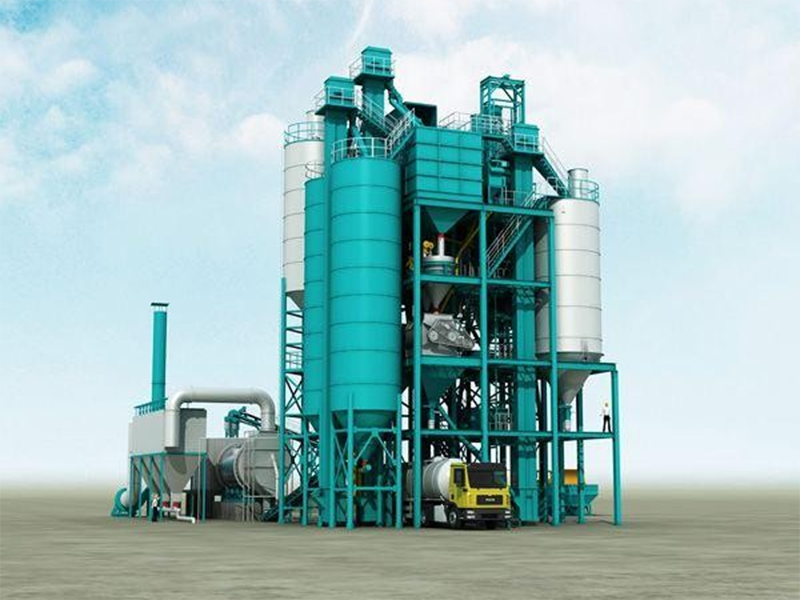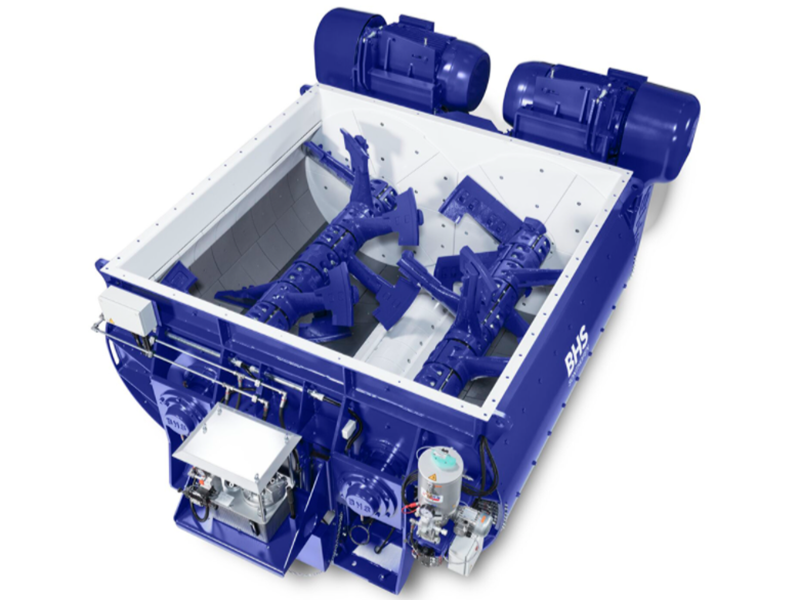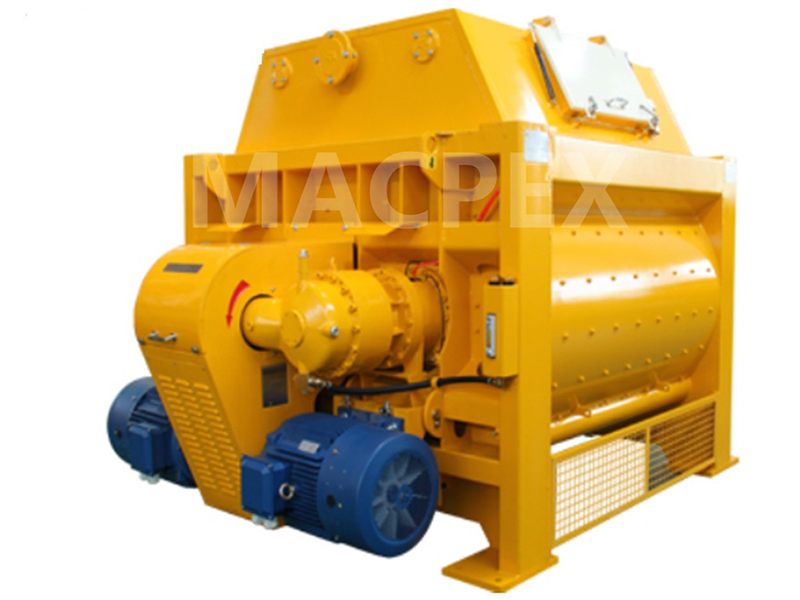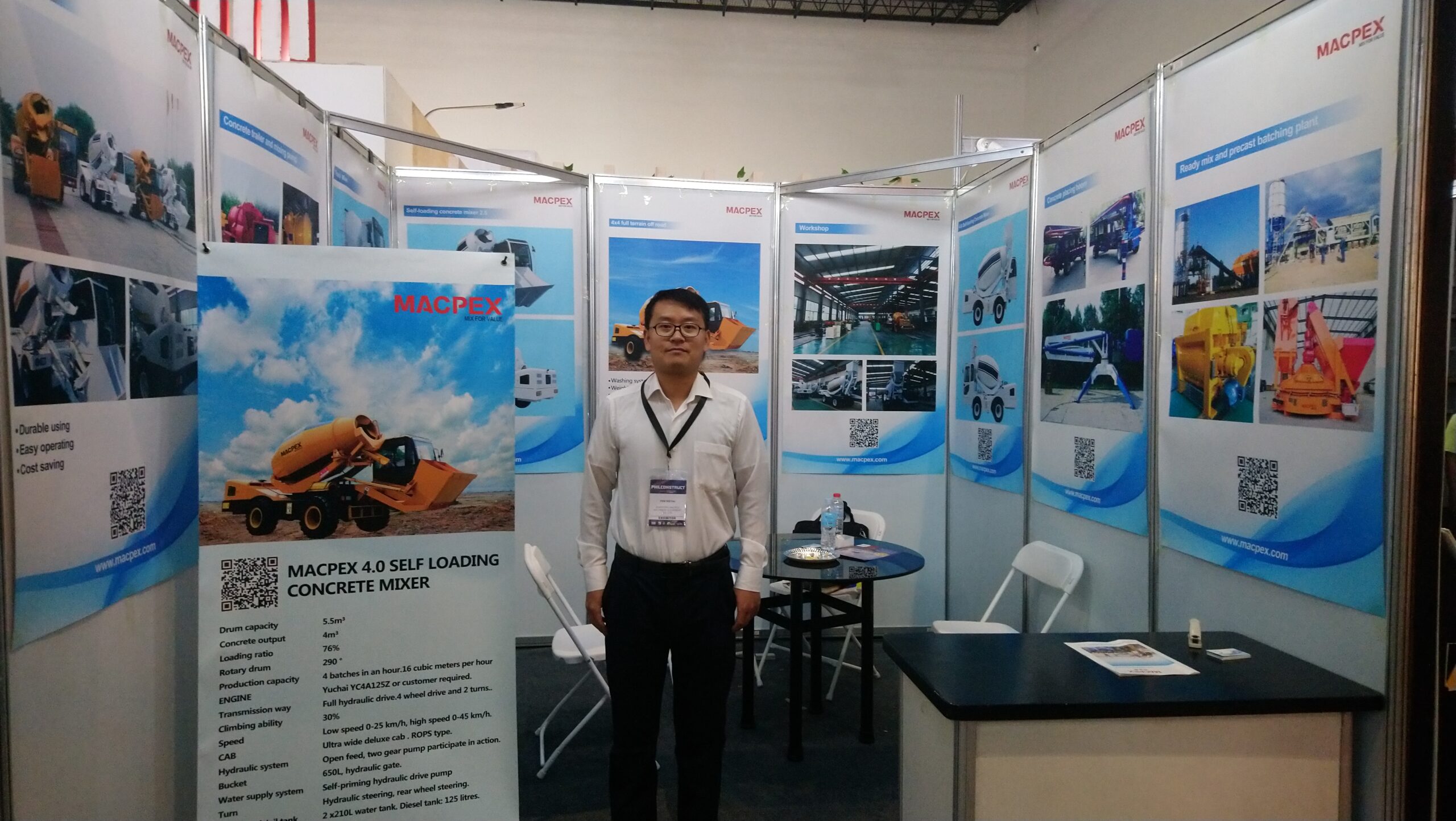1. The essence of the concept is different
Concrete is a general designation of engineering composite materials in which aggregates are cemented into a whole by cementitious materials. Generally speaking, the term concrete refers to using cement as cementitious material and sand and stone as aggregate; It is an artificial stone mixed with water (with or without admixtures and admixtures) in a certain proportion, mixed, compacted, formed, cured and hardened. The cured cement concrete is also known as ordinary concrete, which is referred to as “concrete” for short. Its factory products are generally wet materials. Dry powder mortar is a granular or powdery mixture formed by physical mixing of dry screened aggregate (such as sand), inorganic cementitious materials (such as cement) and additives (such as polymers) in a certain proportion. It is also called mortar dry powder, dry mixed mortar and dry mixed powder. Its factory products are generally dry materials.
2. Different product components
The proportion of sand and stone as aggregate in concrete is relatively large, relatively single, with relatively large particle size and low specification requirements. The aggregate does not need or rarely needs drying treatment; The selection and use of powder and additives are relatively fixed, the mixing process is accompanied by the mixing of water (liquid materials), the product is relatively single, and large-scale continuous production. Dry powder mortar aggregate (generally sand) the requirements of formula are variable, and the particle size is generally 0-4.75mm. The specification is relatively large according to the product adjustment range, and the aggregate generally needs drying treatment; the selection of powder and additives is widely used, and the use of additives in many products is only 1000 or even 10000, so there are many kinds of additives. The types of finished products are relatively large More widely, the supply of a single product is smaller than that of concrete, and the product is kept dry throughout the process.
3. Different transportation modes
Dry powder mortar can be transported by various means, for example, it can be transported to the company’s site in bulk truck for direct use or stored in bulk tank for standby; it can meet the needs of small batch on site in the form of bag packaging or stored for standby; it can meet the needs of batch on site in the form of ton bag packaging. Due to the product characteristics, concrete is generally transported by finished product bulk mixer truck 。
4. The flexibility of production is different
Concrete is generally used and produced on the spot, and the production is determined by sales; dry powder mortar can take into account the characteristics of concrete production. At the same time, according to the continuous operation such as working conditions, the finished products can be stored or given consideration to the existing market supply, and the product structure can be adjusted to adjust the market.
5. The basis of design is different
The design of concrete equipment is generally based on the workability, strength and durability of concrete, and the concrete mix proportion design method (i.e. assumed unit weight method and absolute volume method) is adopted according to the “water cement ratio rule” The technology of dry powder mortar equipment is based on engineering thermodynamics, powder mechanics, fluid mechanics, structural mechanics and material mechanics, combined with the corresponding experimental data (many studies on powder mechanics and engineering thermodynamics have only experience and experimental formulas) Combined with the rapid development of modern computer technology and the principle of similarity, the corresponding mathematical model is established, so as to select reasonable equipment units and construct corresponding system integration.
6. Different equipment processes
The concrete mixing production line is mainly composed of raw material storage system, raw material weighing system, raw material conveying system, mixing system, electrical control system and other auxiliary facilities:
1) Material storage system: such as sand and gravel storage hopper of batching machine, cement bin, water tank, admixture storage tank, etc.
2) Material weighing system: sand and stone scale, cement scale, water scale and admixture scale of batching machine. The sand and stone scale of batching machine is divided into cumulative measuring scale and individual measuring scale. The individual measuring scale is several sand and stone measured at the same time, which saves measurement time compared with the cumulative measuring scale. It is mostly used in large mixing buildings.
3) Material conveying system: belt conveyor (divided into large inclination and inclined belt), cement screw conveyor, water pump, sand lifting hopper, etc.
4) Mixing system: it is divided into single horizontal shaft, double horizontal shaft, vertical shaft and self falling type. The common model is double horizontal shaft.
5) Electrical control system: it is divided into two categories: automatic and manual. Automatic is divided into pure control and control plus production management.
6) Auxiliary facilities: such as control room, lighting, lightning protection and other facilities.
The dry powder mortar production line is mainly composed of aggregate treatment system, raw material storage system, raw material weighing system, raw material conveying system, mixing system, finished product conveying and storage system, finished product packaging system, electrical control system, dust removal system and other auxiliary facilities:
1) Aggregate treatment system: generally refers to the relevant equipment of heat source (coal, oil and gas) related to the drying of sand aggregate, coarse and fine screening according to the process classification and other system units. 2) Raw material storage system: such as wet sand hopper, dry sand silos of different specifications, cement silos of different varieties and other powder silos, admixture silos of different general categories and transition silos of corresponding units.
3) Raw material weighing system: sand aggregate scale, cement and other powder scales, admixture small material scales (or including some manual weighing scales), mostly adopt separate weighing scales, and operate by batch unit accumulation or reduction.
4) Raw material conveying system: belt conveyor (divided into large inclination and inclined belt), elevator (ring chain, plate chain belt type), screw conveyor for fine aggregate, cement and other powder and small material additives commonly used for aggregate.
5) Mixing system: non gravity, horizontal screw belt and plow mixer are commonly used (to be selected according to product characteristics).
6) Finished product conveying and storage system: finished product storage bin, finished product conveyor and other institutional units.
7) Finished product packaging system: such as bulk unit transported by back tank truck, bag packaging unit shipped by finished product bag, etc.
8) Electrical control system: it can be divided into three forms: manual, semi-automatic and full-automatic. Automatic can also be divided into pure control and control plus production management and remote monitoring.
9) Dust removal system: with the occurrence of dust in the production process, it is a multi node processing unit for handling feeding, conveying, mixing, unloading, packaging and so on. Centralized dust removal and decentralized dust removal are mainly adopted.
10) Auxiliary facilities: such as control room, lighting, lightning protection and other facilities.
7. Different equipment selection
The mixert is the core of both, which is illustrated by taking it as an example.
When sand, stone, cement, water and other materials enter the concrete mixing machine, there are both physical and chemical reactions among the components of the materials. An excellent mixing machine can form a hydrate film with high shear strength, viscosity, elastic modulus and hydrate film in an effective unit time, and surround each particle of aggregate with hydrate film, BHS mixer is the best. Generally, a mixing unit lasts for 30-60 seconds. With the continuous improvement of the productivity of concrete mixing equipment, the mixing host is bound to develop in the direction of large capacity. Generally, concrete mixer is often selected based on the performance grade of concrete. At present, concrete mixers are mainly divided into SICOMA twin shaft mixer, single horizontal shaft and single vertical shaft. Due to their structural characteristics and adaptability, single horizontal shaft mixers and single vertical shaft mixers have been less and less used in commercial concrete mixing equipment, which are suitable for users with low investment intention or more used for mixing light and small aggregates; Due to its outstanding structural characteristics, good mixing performance, quality, strong overload capacity, no segregation during unloading, high production efficiency, good adaptability and good reliability, the double horizontal shaft mixer can adapt to concrete mixing with various properties. At present, the forced mixing is widely used in commercial concrete mixing equipment.
The dry powder mortar mixer the most critical link in the production of dry mixed mortar. An excellent mixing mixer can not only meet the production capacity demand, but also realize the flexible and continuous production of multiple varieties of mortar by one mixer, and realize the uniform and full mixing of aggregates, cementitious materials and additives in each mortar product in unit time, It can realize the light and uniform mixing of lightweight materials such as polyphenylene particles, and the full mixing after the crushing of irregular materials such as cellulose ether and pigment. At the same time, after each process or each work cycle unit is completed, the main machine will unload clean without or less residue (or less manual intervention), which will not affect the quality of products. The mixer shall be equipped with on-line sampling device to facilitate quality detection. Generally, the batch mixing time of mortar is about 150 seconds, the unloading time is 10-30 seconds, and the complete cycle time of feeding, mixing and discharging is about 3-4 minutes. The mixing time is not directly proportional to the mixing uniformity, and too long mixing time is easy to reduce the mixing uniformity. For the same capacity mixer, the smaller the total volume, the better, and the higher the effective volume, the better. At present, there are three types of mixers commonly used in the market: non gravity type, plow type and screw belt type. The drive form of chain and coupling connecting reducer is often adopted. When an ideal mixer produces different mortar products, the design capacity of the production line should not change or change significantly.
For both concrete and dry powder mortar production lines, their mixers are the main shaft of the whole production line design, and appropriate equipment shall be selected for other unit processes. Because mortar products have many kinds of powder materials produced simultaneously or alternately, there are relatively many factors to be taken into account. Therefore, when selecting dry powder mortar mixing host, investors are advised not to select dry powder mortar mixing host from the perspective of concrete mixing host, so as to avoid selecting mixer with high energy consumption, low efficiency and low quality products.




